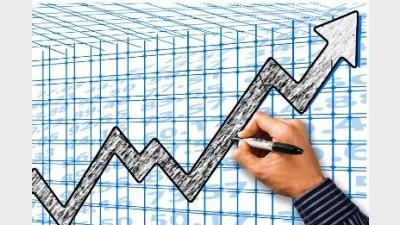Australian economy staring down a fork in the road, says Deloitte



With the RBA grappling with imperfect inflation figures amid weak growth, the data points that emerge from Q3 are set to be a pivotal juncture for the Australian economy and its policymakers, according to a macro specialist.
In its latest Business Outlook Report, Deloitte Access Economics partner and report lead author Stephen Smith highlighted that key dates are approaching. June quarter inflation data is expected in late July and June quarter economic growth will be released in early September.
“These two data points bookend a critical August meeting of the Reserve Bank board and the July labour force release,” Smith said.
Smith posited that two clear pathways are emerging, manifesting as a significant fork in the road for the local economy for the year ahead.
“Down one road, a high June quarter trimmed mean inflation result could force the hand of the RBA to lift interest rates once more in early August, further crushing household and business confidence and wiping out the benefits of tax cuts and real wage gains in the second half of 2024,” he said.
The alternative, Smith said, is the June quarter inflation result being more benign, consistent with the slower pace of growth in the Australian economy.
“That would see the RBA hold interest rates steady again next month, enabling households to lead a steady recovery in economic growth in 2024–25,” he said.
“Deloitte Access Economics’ forecasts most closely resemble the second road.”
Cathryn Lee, Deloitte Access Economics partner and report co-author, emphasised that the firm believes interest rates neither will nor should increase from current levels, providing several reasons for this case.
According to Lee, interest rates at their current level are restrictive, and although inflation is retreating more slowly than hoped, it is moving towards the RBA’s target.
“Third, further interest rate increases are unlikely to temper price growth any more meaningfully than would otherwise be the case,” she said.
“And finally, the surge of post-pandemic inflation hit Australia later than it hit other economies and has therefore cooled earlier elsewhere as well. That has enabled short-term interest rates to be cut in several economies while the prospect of lower policy rates in the United States and New Zealand has also strengthened notably in recent weeks.”
Expanding on this, Smith argued that a rate hike at the RBA’s August meeting “cannot be justified”, as it would undermine a cautious economic recovery.
A scenario that would see rates stay on hold, he explained, would allow the narrative of a strengthening Australian economy through the second half of 2024 to remain intact.
“In recent months, the number of people in the labour force has ticked above the pre-pandemic trend, while Australia’s stock of productive capital is also as large as it otherwise would have been if not for COVID-19. That suggests that Australia’s economy should be larger than it would have been in the absence of the pandemic. But it’s not,” Smith said.
“How does this conclusion square with Australia’s still-low unemployment rate of around 4 per cent? That can be explained by a growing body of evidence that suggests Australia’s unemployment rate remains so low because of job growth in non-market sectors such as health and disability services.
“Those jobs are important, but strong employment growth in those sectors is not typically associated with a booming economy.”
Smith pointed out that interest rates are traditionally used to help manage inflation caused by an overheating economy; by suppressing demand and slowing the pace of economic growth, higher interest rates can be used as a helpful tool to tackle inflation.
However, he emphasised that the Australian economy is not overheating, adding that the level of economic activity is below where the pre-pandemic trend would have taken it even as inputs of capital and labour are higher.
This, Smith said, indicates that persistent inflation is not primarily driven by excessive demand, but by other underlying factors.
“For example, the housing shortage is pushing up rents, previously high inflation is causing ‘administrative’ price increases for items like school fees, and insurance premiums are rising because of earlier increases in the cost of claims.
“None of this sort of inflation will be tamed by higher interest rates,” Smith said.
Recommended for you
The International Monetary Fund (IMF) has issued a sobering assessment of the global economic landscape in its latest World Economic Outlook, dramatically revised after Donald Trump’s 2 April announcement of sweeping tariff measures.
Growth from the listed company’s key businesses has propelled Generational Development Group to new milestones in the three months to 31 March.
Sharemarkets might have been rallying on the back of central banks’ progress in the inflation fight, if not for Donald Trump’s escalating trade tensions and renewed attacks on the US Federal Reserve, according to AMP’s chief economist Shane Oliver.
Super industry advocates are calling on all parties to prioritise stopping abusers from getting access to their victims’ super.












